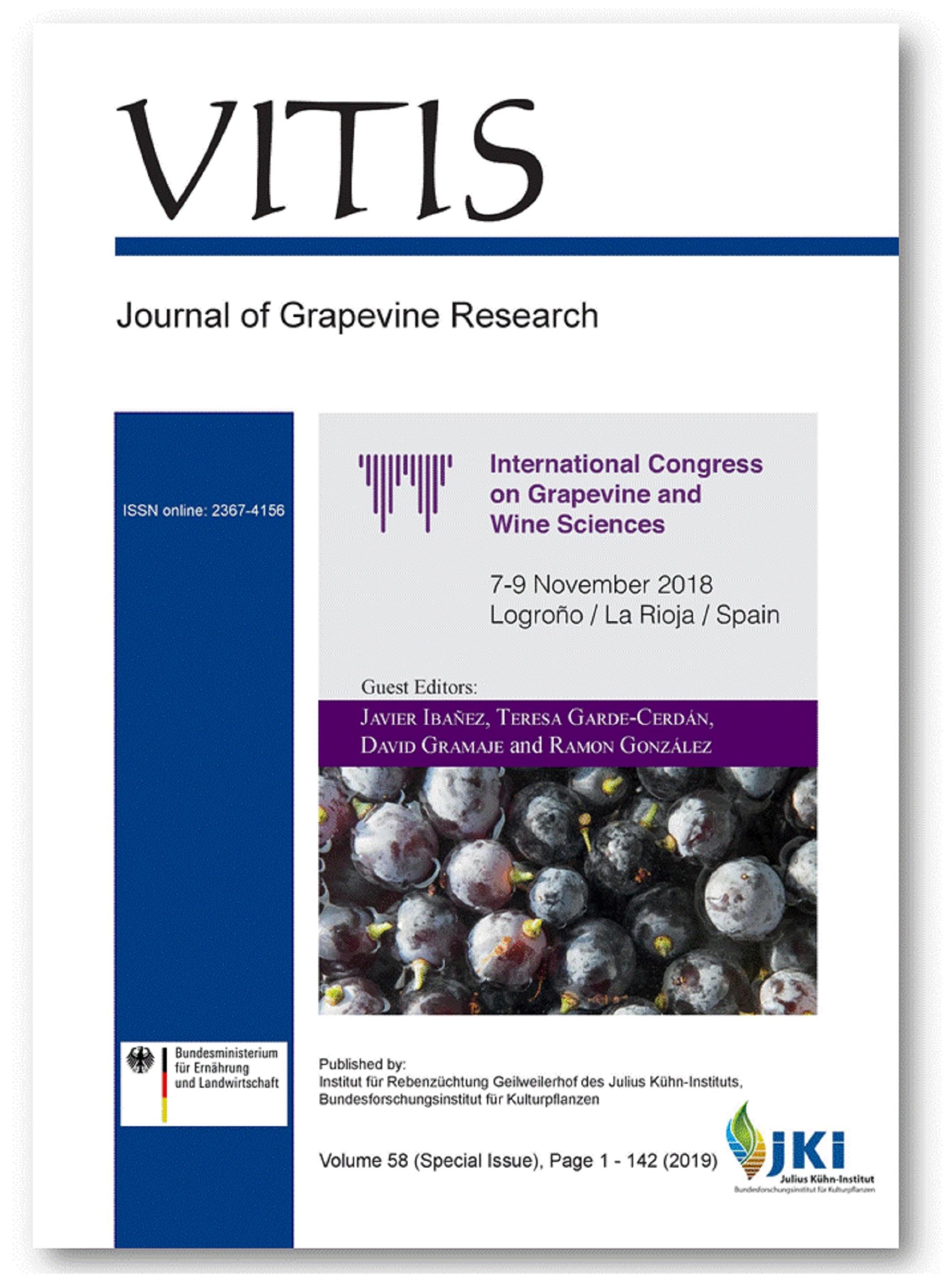Ultrasonic treatments during the alcoholic fermentation of red wines: effects on 'Syrah' wines
DOI:
https://doi.org/10.5073/vitis.2019.58.special-issue.83-88Keywords:
ultrasounds; volatile compounds; 'Syrah'; red wine; grape.Abstract
Grapes grown in warm climates have shorter ripening periods. This makes the regular level of several compounds related to sensory properties in wine to remain low. Therefore, those grapes need to receive a particular treatment during winemaking processes if they have to reach the adequate content levels of colour and aroma related compounds. Applying ultrasound during some of the winemaking procedures may contribute to improving the maceration process, which would result in a higher recovery of compounds from grape skins and seeds to the must. This work studies the effect of applying ultrasound to 'Syrah' musts for two different time lengths during its alcoholic fermentation. The wines produced according to regular winemaking procedures (reference wines) were then compared to wines that had been produced under the effect of ultrasound for 30 to 60 min per day. The results showed that the wines produced using ultrasound had concentrations of volatile compounds higher than their reference wine. These data were consistent with the results from the tasting panel, where the judges highlighted the red fruit notes of the wines resulting from the application of ultrasound during the alcoholic fermentation. On the other hand, there were differences between the two wines resulting from applying ultrasound for two different lengths of time, applying ultrasound for 30 min per day proved to be more effective in terms of aroma than applying ultrasounds for 60 min per day.
The conclusion of this research is that applying ultrasound during the alcoholic fermentation favours the extraction of volatile compounds. However different times can produce different results. Furthermore, an excessive application of ultrasound may lead to the degradation of some of the compounds of interest.
Downloads
Published
Issue
Section
License
The content of VITIS is published under a Creative Commons Attribution 4.0 license. Any user is free to share and adapt (remix, transform, build upon) the content as long as the original publication is attributed (authors, title, year, journal, issue, pages) and any changes to the original are clearly labeled. We do not prohibit or charge a fee for reuse of published content. The use of general descriptive names, trade names, trademarks, and so forth in any publication herein, even if not specifically indicated, does not imply that these names are not protected by the relevant laws and regulations. The submitting author agrees to these terms on behalf of all co-authors when submitting a manuscript. Please be aware that this license cannot be revoked. All authors retain the copyright on their work and are able to enter into separate, additional contractual arrangements.



